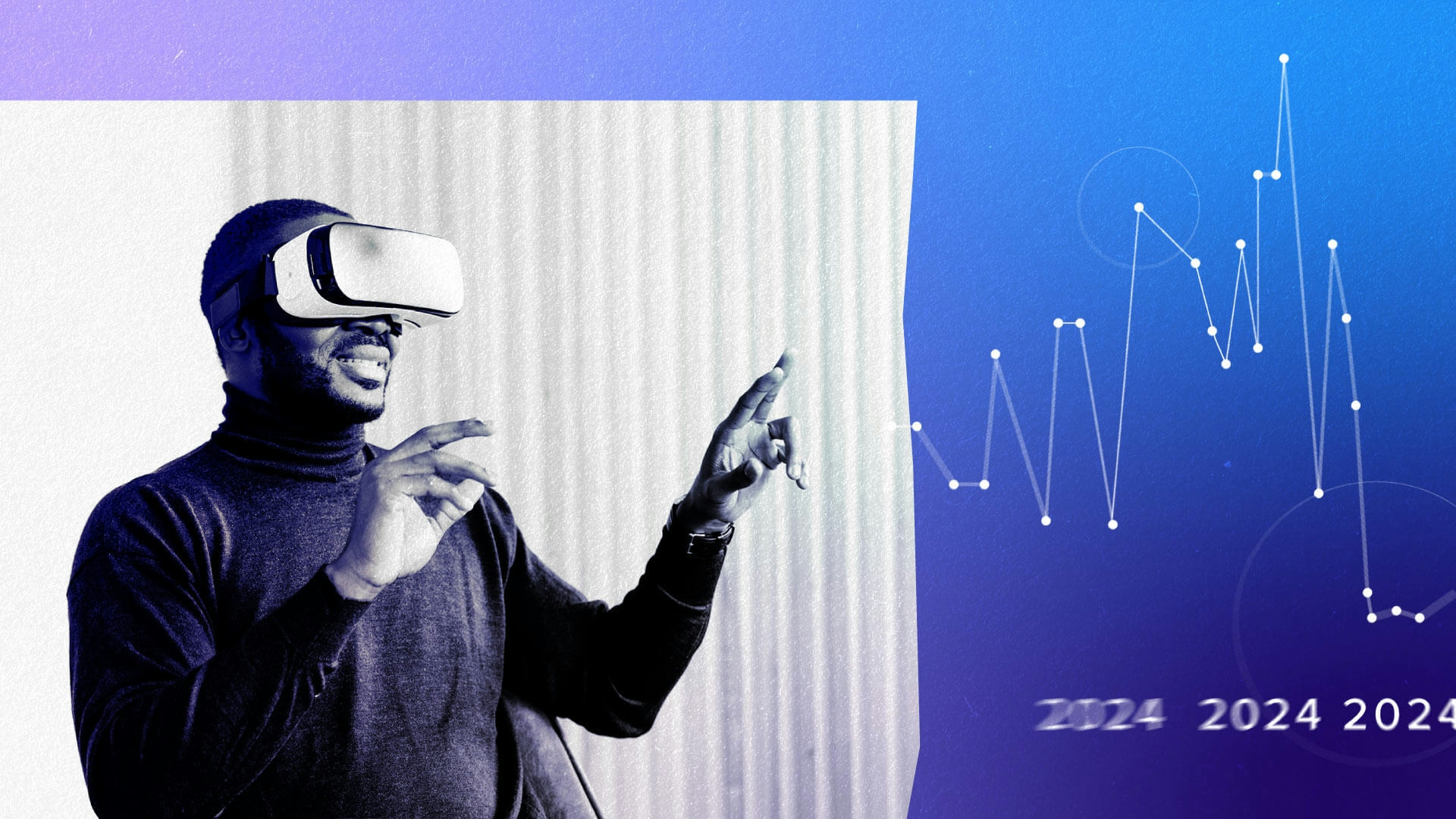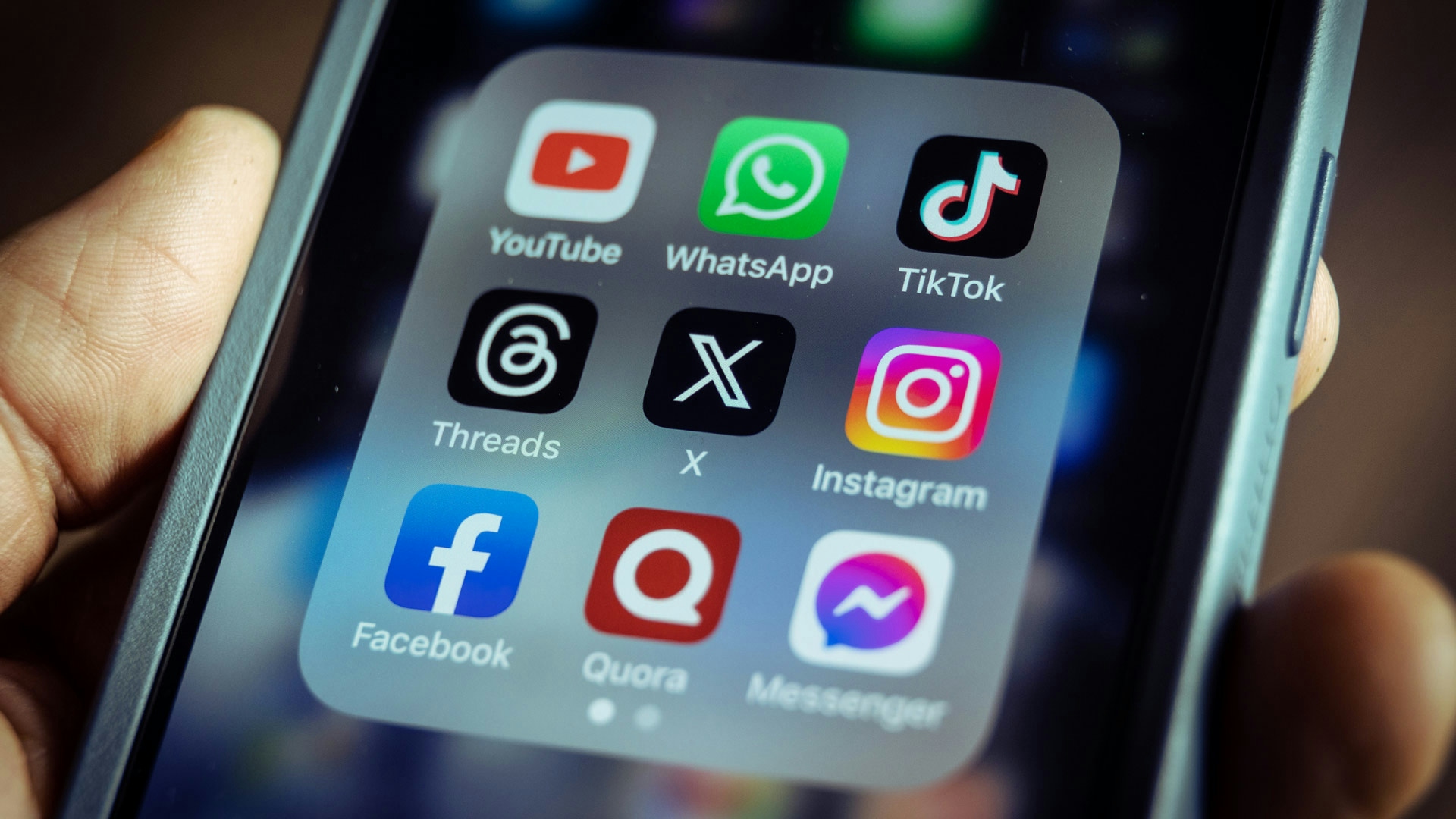2024 Media & Entertainment Trends: M&A, Long-form Social Media Video and Experiential Activations

Key Takeaways
In 2024, look for a notable M&A deal to be announced: Apple will bid for a prestigious independent studio like Imagine Entertainment or Warner Bros. Discovery will target Paramount Global.
Social platforms should increase maximum video lengths to increase ad revenue opportunities and make it more viable for studios to distribute full shows and movies on platforms like TikTok.
Expect media companies to place a greater emphasis on offering in-person events as a way to differentiate their video streaming services and boost the profile of increasingly ambitious theatrical films.
Sign up to get our latest entertainment industry data and analysis delivered straight to your inbox.
Next year will be a period of great ambition in the entertainment industry as companies look to make up for stalled progress due to the once-in-a-generation labor strikes that paused Hollywood. Read on for my predictions on how media and tech giants alike will look to make 2024 a banner year for growth.
Apple or Warner Bros. Discovery makes a surprise M&A bid
Consolidation is constantly occurring within the media space. This year’s notable media mergers and acquisitions included Disney’s planned purchase of Comcast’s minority stake in Hulu and Lionsgate’s purchase of eOne. But 2024 should be an even more eventful year of media M&A as industry heavyweights that’ve recently sat idle jump into the fold.
After launching more than four years ago, Apple will tire of seeing Apple TV+ lag behind major peers in domestic reach and turn to an acquisition to fast-track growth. No, this wouldn’t be the game-changing Apple-ESPN deal that some have speculated should occur, as the tech giant likely isn’t keen on spending billions to heavily tie itself to the shrinking industry that is linear TV.
Instead, it would mean Apple bids for a smaller, prestigious production studio, such as Imagine Entertainment (an award-winning outfit that has already produced Apple TV+ content and been subject to M&A overtures). Apple TV+ wouldn’t suddenly transform into an entertainment behemoth, but this type of move would still help it churn out a more predictable stream of hits to accelerate subscriber growth and strengthen its prestige push.
1 in 5 Americans Say They Subscribe to Apple TV+
If this doesn’t occur, Warner Bros. Discovery will be the major media acquirer of 2024. Yes, WBD just ended the third quarter with $43 billion in debt, a result of the blockbuster WarnerMedia-Discovery merger. But WBD has obsessively worked to lower that debt, and signaled in November it will be better positioned as a buyer in 12 to 24 months. WBD is also free from what’s essentially a post-merger M&A restriction period after April 2024, while some industry experts never saw WBD as CEO David Zaslav’s final play.
WBD should bid for Paramount Global, perennially considered a media acquisition target given its relatively small size. (This summer, Wells Fargo valued Paramount at roughly $22 billion.) In October, Puck reported speculation from industry insiders that WBD may pursue acquiring Paramount “perhaps in a year or so.” A key benefit of the potential tie-up — aside from well-known intellectual property like “Yellowstone” that would supercharge Max’s catalog — would be WBD’s access to Paramount’s valuable NFL rights. The Zaslav-led company lacks access to the NFL, which still dominates traditional TV ratings.
Social media platforms will increase video lengths
The modern social media short-form video battle kicked off in 2020 after TikTok’s popularity became abundantly clear. That year, the ByteDance-owned app revealed that its U.S. monthly user count had grown from 11.2 million in January 2018 to over 100 million in August 2020. Naturally, Instagram, YouTube and Snapchat debuted their own TikTok competitors that year.
Specific demographics at scale: Surveying thousands of consumers around the world every day powers our ability to examine and analyze perceptions and habits of more specific demographics at scale, like those featured here.
Why it matters: Leaders need a better understanding of their audiences when making key decisions. Our comprehensive approach to understanding audience profiles complements the “who” of demographics and the “what” of behavioral data with critical insights and analysis on the “why.”
Today, these platforms seem headed into a new phase — let’s call it the “not-so short-form video battle.” TikTok in October started testing video lengths of 15 minutes, 5 minutes more than the previous limit. Instagram’s Reels internally tested video lengths of 10 minutes, an increase from its 3-minute limit. YouTube, meanwhile, reportedly expressed concerns over the possibility that Shorts could drive users away from its more lucrative long-form videos.
Social platforms are likely to allow users to upload even longer videos in 2024. Longer videos afford platforms more attractive ad revenue opportunities — it’s not as practical to stick an ad in the middle of a 90-second clip than, say, a 10-minute video. Additionally, many influencers have bemoaned how difficult it is to make money from short videos, and longer-form video ad revenue could trickle down to improve creator monetization. Improving creator monetization would be particularly valuable to TikTok, which has seen Reels and Shorts more closely approach its own popularity with Gen Z since 2022.
Young Consumers Are Warming Up to TikTok Alternatives
Allowing longer videos also makes sense because it makes social platforms more viable distribution platforms for full TV shows and films. These apps should be more welcoming to such Hollywood content because media companies like NBCUniversal and Paramount are now experimenting with releasing full movies or TV shows on social media as marketing stunts.
And given the fact that social networks are looking for content to fill the feeds (especially as users cut down on posting), it seems reasonable to assume that the push for longer videos will likely even be observed across platforms like X that don’t have prominent TikTok competitors.
Experiential initiatives rise in prominence among media companies
In 2023, media companies have shown greater appetites for serving consumers in real life: Netflix announced plans to open brick-and-mortar locations in 2025 that offer immersive experiences, while Disney said it will double its investment on parks and cruises to $60 billion over the next decade (a move that will strengthen the profile of Disney’s IP).
These two entertainment giants couldn’t be further apart in terms of in-person attractions investment, but it’s also become clear why media companies will have to start pumping out more live experiences, in theme parks and beyond: video streaming.
Netflix is the only platform that generates meaningful profit, and there aren’t many new ways for streamers to separate themselves anymore. However, giving subscribers discounted or even free access to live experiences would be a new way to sweeten the value proposition of the services’ monthly fees. For example, Paramount could offer Paramount+ subscribers discounted or free access to pop-up events like next month’s “Mean Girls” dining experience, where tickets start at $35.
Meanwhile, Netflix could randomly select Premium subscribers to receive free tickets to live experiences like the “Stranger Things” play or the Netflix Cup. Since Netflix’s subscriber base is so big, this randomized selection method would be more practical than allowing all paid subscribers to attend any of its experiences for free.
A greater push toward experiences makes particular sense for other nontraditional studios like Apple and Amazon, which have each committed to spending at least $1 billion annually on theatrically released movies. These companies are aiming to drive more foot traffic to increasingly ambitious theatrical releases like “Air” and “Killers of the Flower Moon,” so it’s sensible for them to spend more on pop-up experiences in places like malls, where movie theaters are often just steps away.
Kevin Tran previously worked at Morning Consult as the senior media & entertainment analyst.


